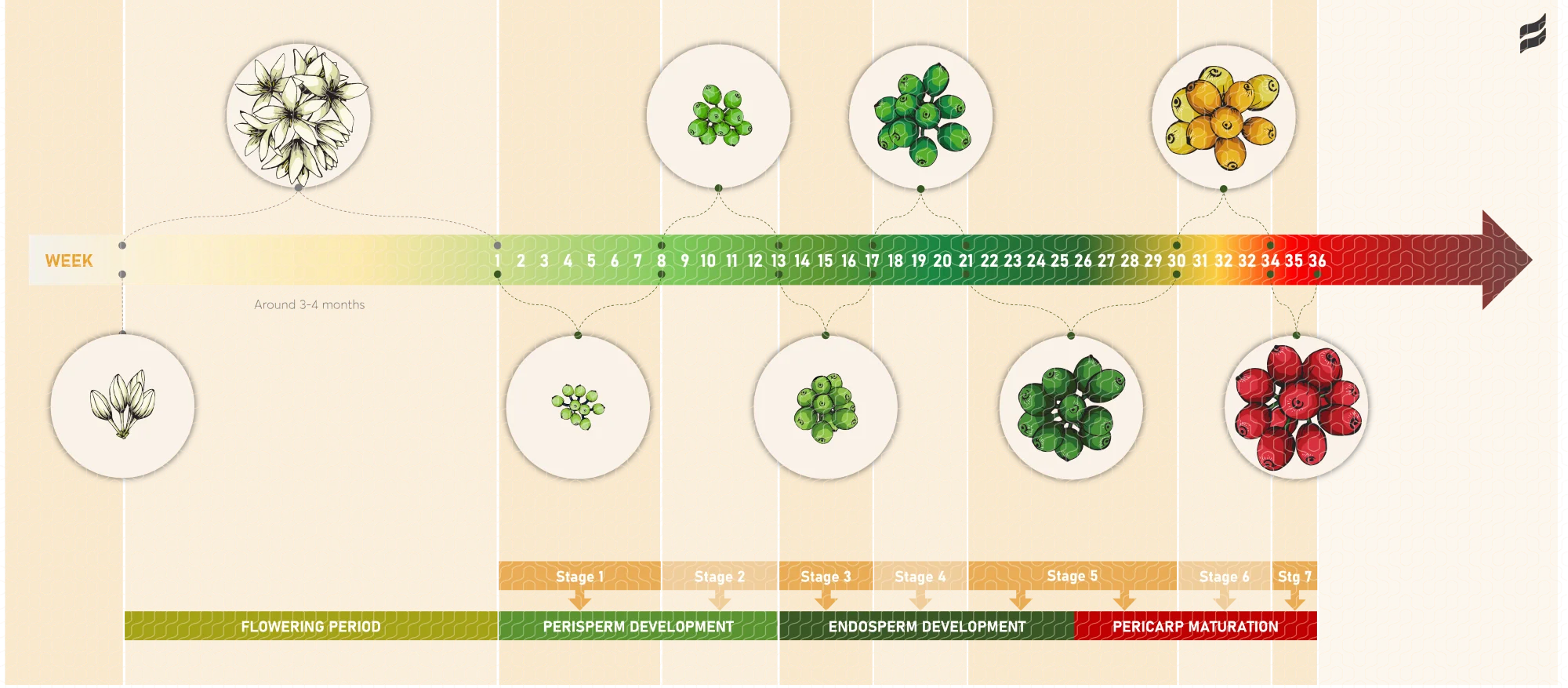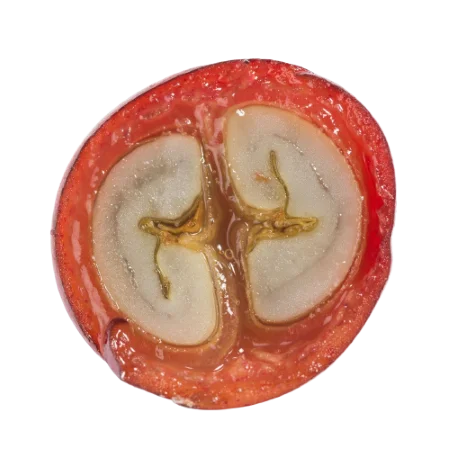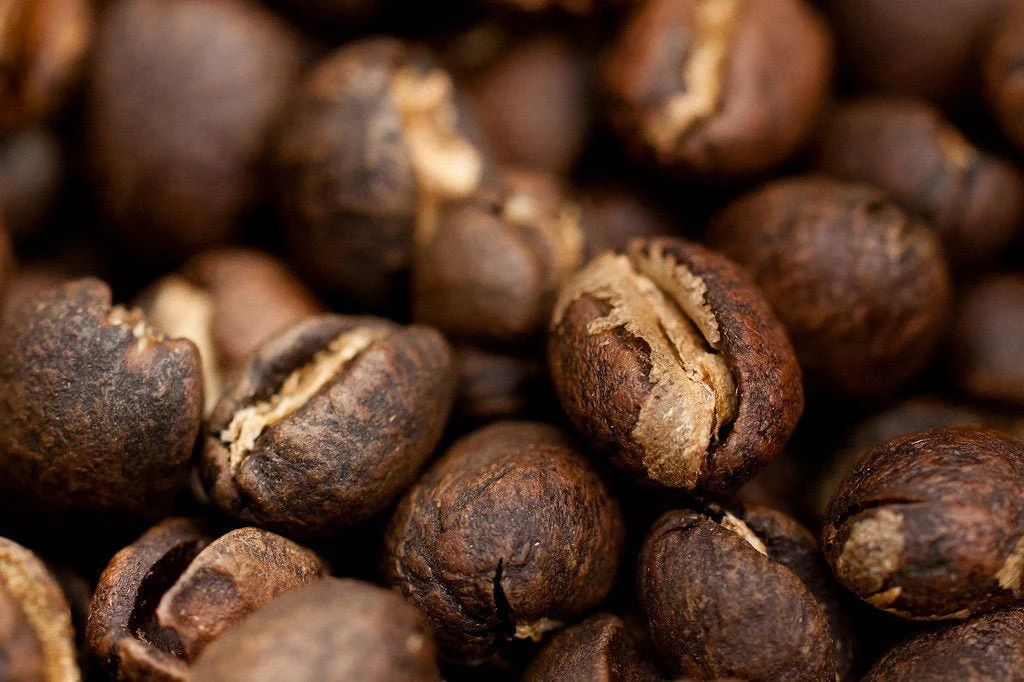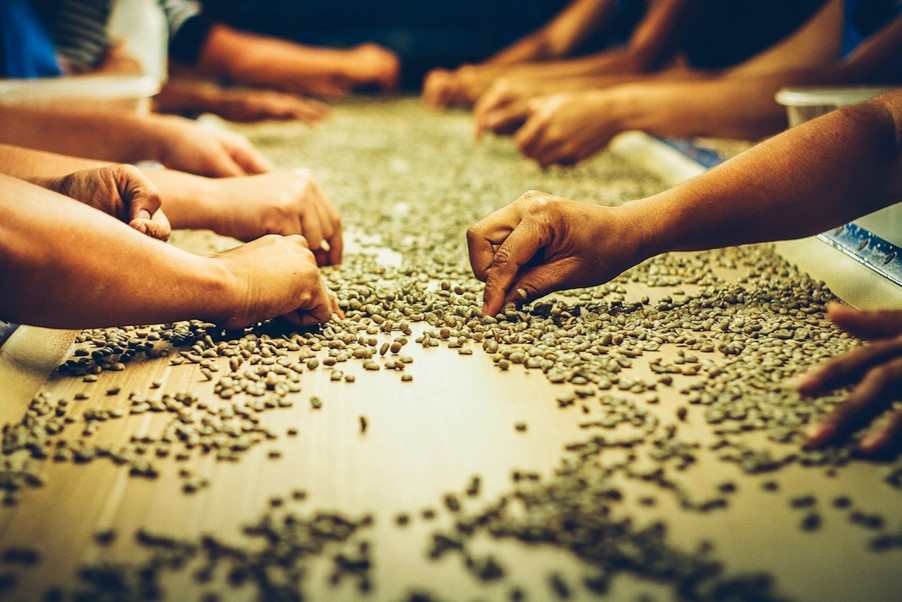Product Line
Peaberry
This line is named after a special form of coffee bean morphology.
Peaberry, also known as culi, is a natural mutation of the coffee bean and can occur in any coffee tree. Appearing with a frequency of about 5-10%, these beans have a round shape like peas instead of being flat on one side like regular beans.
Introducing
Honee Coffee’s Peaberry Product Line
This product line focuses on the unique type of coffee introduced above – Peaberry. The ingredients for this line are selected from the same variety and region as the products of other roasted bean lines.
The purpose of this line is to allow customers to experience the flavor of a single variety or to explore when blended with other products.

Sourcing Region
The ingredients for these products are sourced from renowned coffee-growing regions in Vietnam such as Lam Dong, Son La, or Dien Bien. Each region is suitable for certain varieties and has its own unique flavor.

Selection Process
Selection involves not only choosing growing regions but also considering various quality factors such as seasons, harvesting and processing methods, storage conditions, etc., to ensure the quality and excellence of the coffee.

Originality
Our products are always roasted in their purest form because we believe in Vietnamese coffee beans and our own selection.
INFORMATION
About Coffee Fruit & Beans
Coffee plants are highly sensitive to external environmental factors. These factors greatly affect the yield and quality of coffee beans.
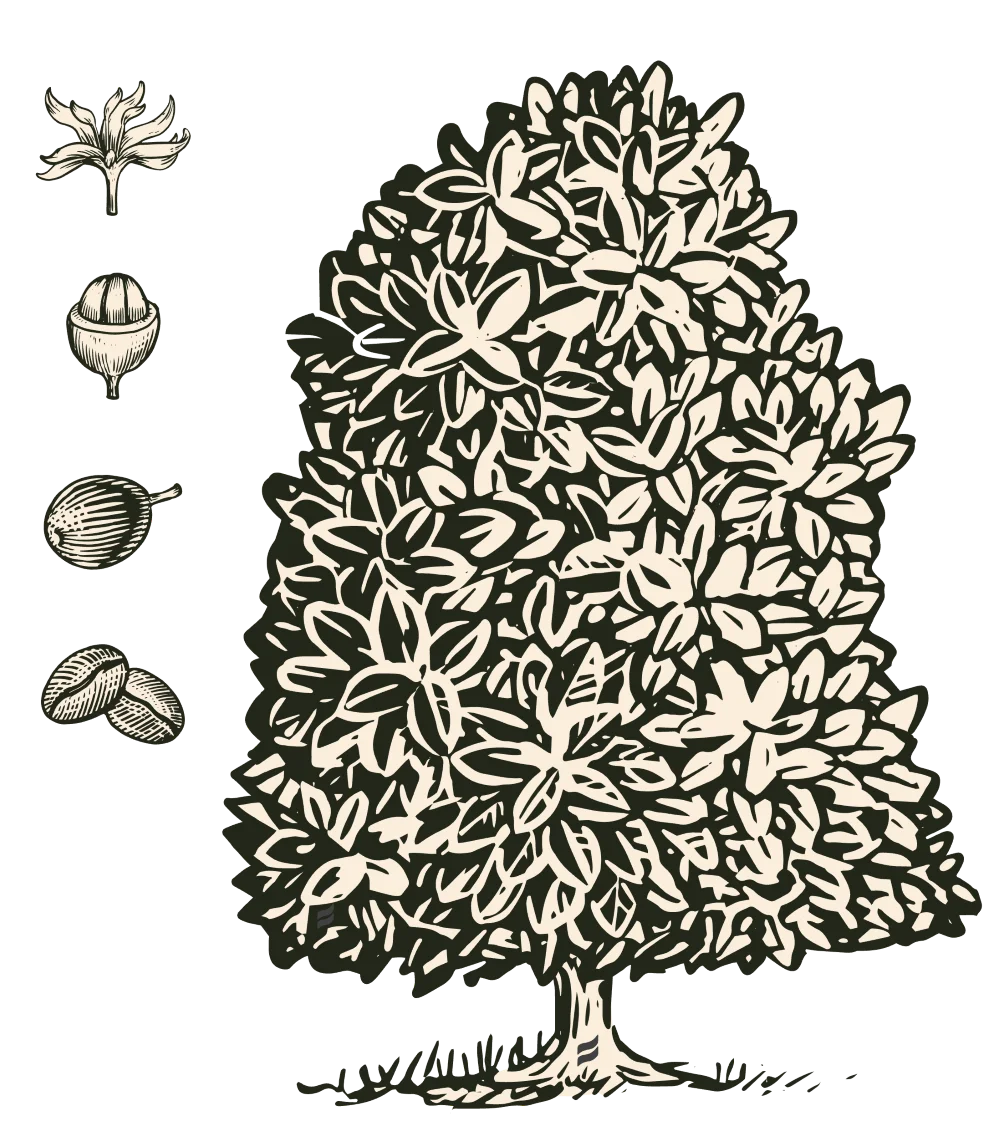
Coffee fruit is classified as a drupe, similar to fruits like plums, peaches, and cherries.
Coffea
Coffee plants typically start yielding harvestable cherries after about 2-3 years of being planted.
Flowering & Pollination
The flowering period of coffee plants typically lasts for 3-4 months and is usually pollinated by wind or various insects.
Coffee Fruit
After the flowering period, coffee cherries take approximately 9 months to ripen. The development and ripening period of coffee cherries can vary due to factors such as different varieties, weather conditions, nutrition, and water availability.
Coffee cherries go through three main periods (see figure below):
- Perisperm Development Period: the cherries develop rapidly due to the growth of the perisperm.
- Endosperm Development Period: the endosperm gradually grows at the expense of the perisperm, until completely occupying the inner portion of the seed. This period lasts until the middle of stage 5 and marks the end of cherry development.
- Pericarp Maturation Period: beginning around the middle of stage 5, when the endosperm cell walls start to thicken, and the endosperm begins to accumulate proteins, triacylglycerols (fats), alkaloids (especially caffeine), and a large amount of chlorogenic acids (CGAs). Additionally, the coffee cherries begin to soften, gradually changing color from green to yellow and then to red.
And during this process, if there are irregularities such as uneven pollination, undeveloped ovaries, negative effects of weather, or genetic mutations, it can lead to abnormalities in the development of coffee fruit, specifically coffee beans.
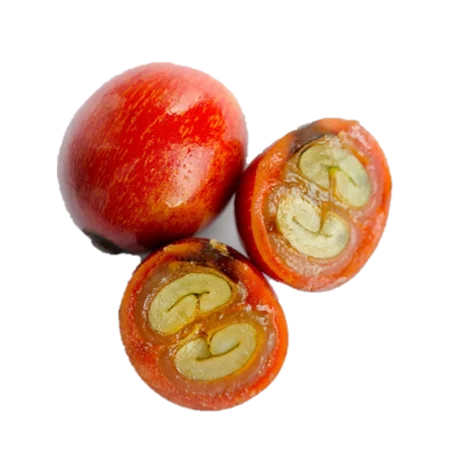
Coffee fruit and beans develop normally.

there's only one bean developing inside the coffee fruit.
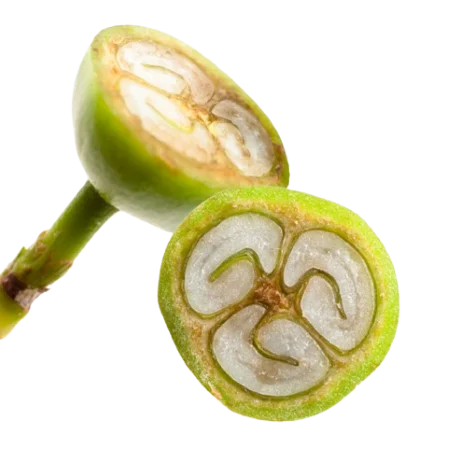
In the case of fruit having more than two beans inside.
Peaberry beans are formed due to the influence of external factors causing one ovary not to develop, and this allows the remaining part to develop and occupy the entire space inside the coffee fruit, thereby creating a round shape like a pea.
Peaberry
Peaberry beans are usually smaller, denser, and have a rounder shape compared to regular coffee beans.
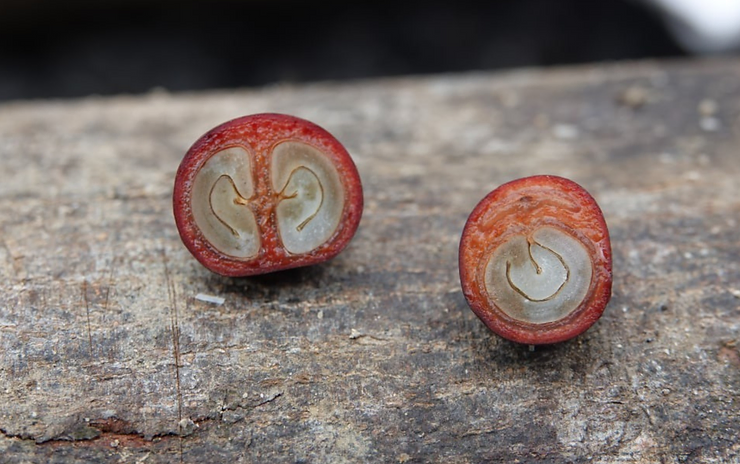
Quality of Peaberry Beans
Peaberry beans are expected to have better quality than regular beans because the nutrients of the fruit are concentrated into a single bean.
However, there is no specific scientific research proving that they are of higher quality compared to regular beans from the same tree.
And like other types of coffee, the quality of peaberry beans also depends on factors such as the environment, soil nutrients, and processing methods.

Coffee Roasting
Regarding the flavor of coffee, it varies depending on individual tastes and tasting abilities. However, for our roastery, to roast peaberry beans well, adjustments to the roasting parameters are necessary. For example, the round shape of peaberry beans affects the movement of beans in the roasting drum, so adjustments need to be made accordingly. Additionally, the high density of peaberry beans requires careful consideration of the temperature to ensure the beans are evenly roasted without burning…
Thus, Peaberry beans can appear in any coffee tree variety, resulting in types such as Peaberry Arabica, Peaberry Robusta, Peaberry Bourbon, etc.
The price of Peaberry beans will be slightly higher because the yield is less than 1/10 of regular beans, and the sorting process may incur additional costs.
As You May Already Know
How are peaberry seeds sorted and separated
Peaberry beans can be sorted by hand or by machine. Hand sorting is typically used for small-scale production. For larger scale operations, machinery is employed based on characteristics such as bean density, sieve vibration…
Information
About Product Classification
The Peaberry line currently only has the Standard product group – 100% peaberry (culi) robusta sourced from Vietnam. In terms of quality, this group is equivalent to the Standard group of the Robusta line.
PREMIUM GRADE FOR PEABERRY?
Currently, we have not developed premium grade products for the Peaberry line at the moment. However, we plan to expand in the future.
Branching Criteria
The criteria used to branch this line is the quality of the raw materials. Determining the quality of the raw materials requires consideration of various factors such as variety, harvest time, degree of sorting, processing methods, growing regions, and evaluation through cupping…
Due to the rigorous selection and evaluation process, branches with higher-quality ingredients typically have lower production quantities.
So are Standard branch products not as good as others?
Standard Peaberry products have the same quality as the Robusta line’s one. However, with differences in the growing periods, Peaberry coffee beans contain distinctive flavor experiences.
In this branch, while the quality of their ingredients may be inferior to other branches, leading to less diversity or depth in flavor, their flavor profile still possesses unique and interesting characteristics to explore.
The Standard branch always serves as the starting point for Honee Coffee’s product lines. These branch products are usually more accessible and are considered the benchmark for the line.
Depending on our fortunate encounters with hidden coffee flavors, new lines will be developed based on the foundation of Standard branch products.

Information
Product
Currently, products in the Peaberry line are only categoried as:
You can enjoy Peaberry products simply in their original form or explore different flavor combinations by blending with other coffee varieties such as arabica, moka…
Explore Flavours
The cards below introduce some typical products of the Peaberry line.
To view the full range of products, please click the button below.
Unique & Distinctive
PRODUCT LINE
Peaberry by Honee Coffee
Peaberry (Culi) beans, with their distinct development and morphology, give rise to unique flavor profiles. Understanding the essence of these beans and adjusting the corresponding roasting techniques is crucial to accentuate these flavors.
Honee Coffee’s Peaberry product is meticulously crafted with care and reverence, promising to deliver captivating coffee experiences.

At the eighty-ninth minute, the Golden balls cast the net!
He gazes in awe as the magnificent ball soars!
The goalpost trembles, and the stands erupt.
Victory so unexpected! He cries, becoming a child again!
